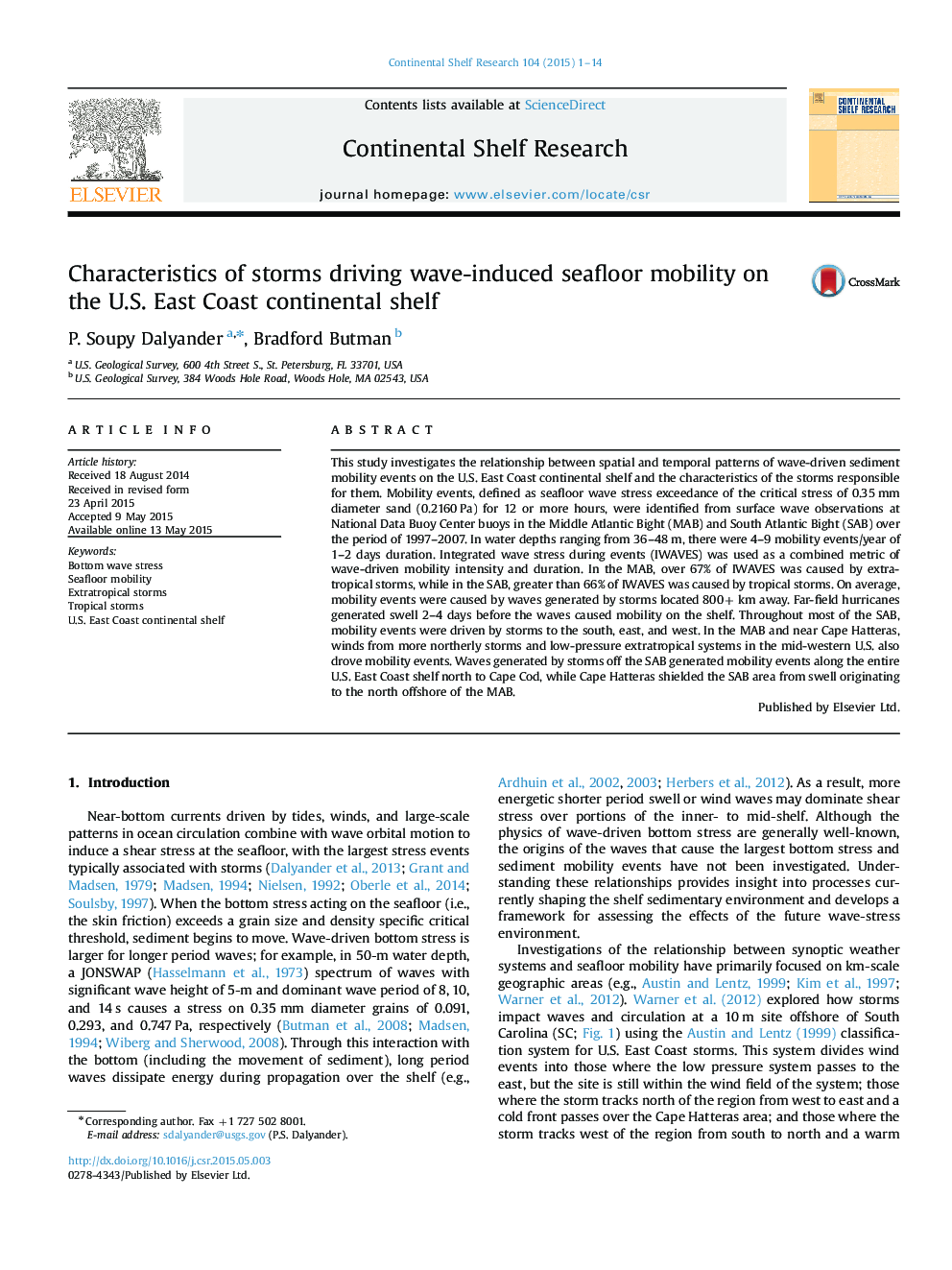| کد مقاله | کد نشریه | سال انتشار | مقاله انگلیسی | نسخه تمام متن |
|---|---|---|---|---|
| 4531684 | 1626108 | 2015 | 14 صفحه PDF | دانلود رایگان |
• Quantify relationship between seafloor mobility, storm type, and location.
• Wave-driven mobility events caused by swell generated 2–4 days before impact.
• Wave-driven mobility events caused by tropical storms as much as 4000 km away.
• South Atlantic Bight wave mobility events caused by storms to the south and east.
• Mid-Atlantic Bight wave mobility events caused by local storms and storms to the south.
This study investigates the relationship between spatial and temporal patterns of wave-driven sediment mobility events on the U.S. East Coast continental shelf and the characteristics of the storms responsible for them. Mobility events, defined as seafloor wave stress exceedance of the critical stress of 0.35 mm diameter sand (0.2160 Pa) for 12 or more hours, were identified from surface wave observations at National Data Buoy Center buoys in the Middle Atlantic Bight (MAB) and South Atlantic Bight (SAB) over the period of 1997–2007. In water depths ranging from 36–48 m, there were 4–9 mobility events/year of 1–2 days duration. Integrated wave stress during events (IWAVES) was used as a combined metric of wave-driven mobility intensity and duration. In the MAB, over 67% of IWAVES was caused by extratropical storms, while in the SAB, greater than 66% of IWAVES was caused by tropical storms. On average, mobility events were caused by waves generated by storms located 800+ km away. Far-field hurricanes generated swell 2–4 days before the waves caused mobility on the shelf. Throughout most of the SAB, mobility events were driven by storms to the south, east, and west. In the MAB and near Cape Hatteras, winds from more northerly storms and low-pressure extratropical systems in the mid-western U.S. also drove mobility events. Waves generated by storms off the SAB generated mobility events along the entire U.S. East Coast shelf north to Cape Cod, while Cape Hatteras shielded the SAB area from swell originating to the north offshore of the MAB.
Journal: Continental Shelf Research - Volume 104, 1 August 2015, Pages 1–14
